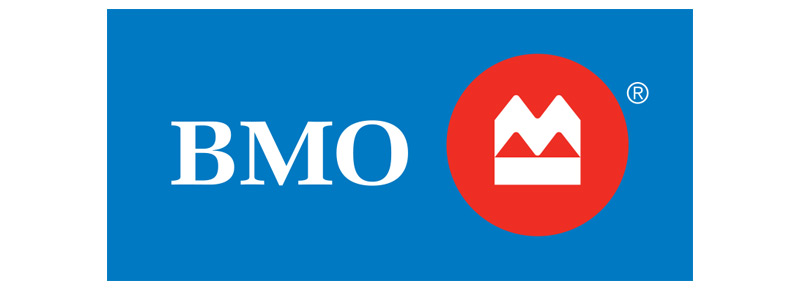The key(s) to unlocking digital attribution in B2B
Platform attribution plays a vital role in understanding and optimizing digital marketing campaigns. However, challenges such as data silos, platform-specific attribution models, frequent policy changes, and the complexity of multi-touch attribution can hinder its effectiveness. By standardizing attribution practices, using third-party tools and staying adaptable to platform changes, marketers can overcome these obstacles and achieve more accurate and reliable attribution insights. This, in turn, enables better decision-making and more efficient allocation of marketing resources.
Make it work for your brand
In the dynamic world of B2B marketing, a one-size-fits-all approach rarely works. Every brand operates within unique parameters, defined by its industry, audience and specific business goals. Therefore, it’s essential to tailor marketing strategies to align with these distinct variables. Understanding industry best practices and learning from other successful campaigns can provide valuable insights. However, forcing a strategy that doesn't fit your brand’s specific needs can lead to inefficiencies and wasted resources. Focus on what is measurable and relevant for your particular business, product or audience to maximize ROI.
Leverage the power of personalization
Personalization is a powerful tool in B2B marketing that is often underutilized. Many marketers guide all their customers through the same funnel, overlooking the potential benefits of personalized experiences. Customizing strategies based on varying levels of engagement and preferences can significantly enhance the effectiveness of your campaigns. This means tailoring messaging and content to align with individual customer preferences and behaviours, which can lead to higher engagement and conversion rates. Moreover, aligning these personalized strategies with sales efforts through more personalized outreach activities can provide a competitive edge, fostering stronger customer relationships and loyalty.
Look at the whole ecosystem
Understanding the entire sales ecosystem is crucial for effective marketing attribution. Instead of focusing solely on lower funnel conversions, consider all touchpoints throughout the sales cycle. This comprehensive view helps identify the true drivers of conversions, especially in complex B2B sales that involve multiple decision-makers and lengthy sales cycles. Relying exclusively on last-click attribution can be misleading and may not accurately reflect the contribution of earlier interactions. By mapping out the entire customer journey and recognizing the impact of various touchpoints, you can better attribute and optimize your marketing efforts.
Consider social in your marketing mix
Social media is an invaluable tool in the B2B marketing arsenal. The most successful B2B brands are those that effectively inspire and engage their audience through social platforms. According to the Wunderman Thompson Global Inspire Study (April 2023), inspiring B2B brands are significantly more likely to be a buyer’s first choice and are 20 per cent more trusted. Social media allows brands to connect with decision-makers on a human level, fostering engagement and building trust. To harness the power of social media, B2B marketers should focus on three key pillars:
- Humanize your brand: Shift from a business-to-business (B2B) or business-to-consumer (B2C) mindset to a human-to-human (H2H) approach. Connecting with buyers on a personal level is not just beneficial; it’s expected. Humanizing your brand can involve sharing “day in the life” videos of employees to showcase the people behind the brand and the value they bring to customers.
- Lean into edutainment: Combining education with entertainment, or "edutainment," makes your content more approachable and valuable. This approach can reduce perceived risks and generate future demand by positioning your brand as both informative and engaging.
- Empower your customers: Ensure that your creative content not only reaches but also resonates with and engages your audience. Support decision-makers throughout their entire journey—from initial discovery to post-sale adoption and loyalty—by providing content that empowers and informs.
Don’t underestimate the power of word of mouth
Word of mouth remains one of the most powerful influencers in B2B marketing. Business leaders often share their experiences and recommendations with peers in similar roles or industries. These informal endorsements can significantly impact buying decisions. Therefore, leveraging word of mouth by gathering and using customer feedback can enhance your marketing efforts. Encourage satisfied customers to share their positive experiences and seek permission to use their testimonials in your marketing materials. Disseminating these endorsements through measurable channels can provide additional insights into your campaign’s reach and effectiveness.
Measure what you can using all available tools
Effective measurement and attribution in marketing extend beyond direct clicks and immediate conversions. Indirect attribution methods, such as customer feedback, Net Promoter Score (NPS) surveys, focus groups and brand lift studies, offer valuable insights into how your marketing efforts resonate with your audience. These tools can reveal what influences buying decisions, the effectiveness of different channels, and how your messaging compares to competitors. While these measures may not provide direct attribution, they contribute to a broader understanding of your marketing impact and help refine your strategies.
Maximizing ROI in B2B marketing requires a nuanced approach that considers the unique aspects of your brand, the power of personalization, the importance of a comprehensive ecosystem view, and the influence of social media and word of mouth. By leveraging a variety of measurement tools and focusing on both direct and indirect attribution, marketers can gain a more accurate understanding of their campaign’s effectiveness. Embracing these strategies will not only enhance your marketing performance but also ensure that your efforts are aligned with your broader business goals, ultimately driving greater success and ROI.
Authors:
Diana Brink-Gourlay, Aviva Canada Inc.
Dave Burnett, AOK Marketing
Erinn Piller, TikTok Canada


































